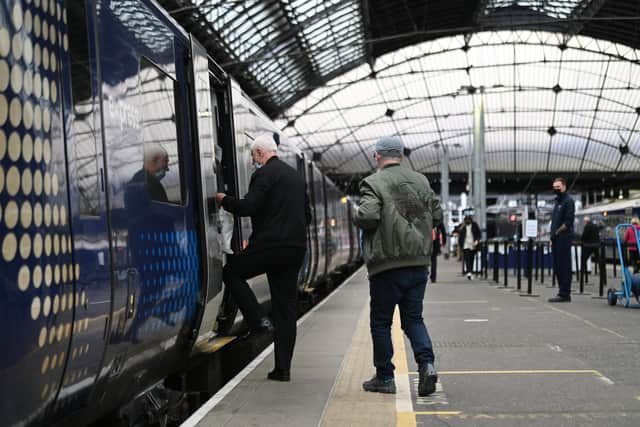Passengers implored to return to rail but the industry isn’t pulling together behind the scenes – Alastair Dalton
With hundreds of millions of pounds of extra funding spent keeping the system running during the pandemic and passenger numbers still only 70 per cent of pre-Covid levels, it’s clearly needed. Despite all the detractors, there’s a huge amount of pride and goodwill towards the railway in Scotland, as programmes like BBC Scotland’s Inside Central Station series have vividly reflected.
Confidence will be slowly returning after protracted disruption last year caused by ScotRail pay disputes which sparked months of reduced timetables, albeit that Britain-wide industrial unrest rumbles on with the threat of further walkouts having a significant knock-on effect on Scotland’s principal train operator. The last 12 months should have been a brave new world for the railways north of the Border, with ScotRail back in public hands for the first time for 25 years, and perhaps the Caledonian Sleeper to follow.
Advertisement
Hide AdAdvertisement
Hide AdBut what on earth is going on behind the scenes? Perhaps it was inevitable that a state-run railway would mean greater political involvement, and transport minister Jenny Gilruth certainly seems to be making her mark in that respect. Just as she previously campaigned for her Fife constituents against plans announced by her predecessor to not reinstate trains cut during the pandemic, I do not doubt her heart is in the right place in questioning the impact on passengers of line closures for engineering work, as she has now done several times.


However, Gilruth is clearly not taking the industry with her in what appears to be a new approach to how the network is run. Rail chiefs have told me of their concern at whether the full implications of postponing work are being considered, both in terms of the significant extra costs it incurs when long-planned projects are rescheduled, and the potential greater disruption to passengers if, say, closing a line for a few days is switched to several weekends at a busier time of year.
But in addition to tensions between ministers and the industry, I have also detected a continued lack of cohesion within what’s supposed to be “Scotland’s Railway” one-team approach – tracks and trains together. I revealed at the weekend that ScotRail’s safety committee chair Nick Brown raised concern that the proposed changes to the timing of engineering work would have “medium and long-term safety implications”. However, some within Network Rail attempted to play this down, saying it would never compromise safety in rescheduling work.
I have still to receive a clear explanation of what Brown meant, but for him to have raised this at a ScotRail board meeting suggests the train operator, its Scottish Government agency Transport Scotland overlord, and Network Rail are still not seeing eye to eye. Add to that the departure of the widely respected industry veteran Chris Gibb from his post at the helm of Scottish Rail Holdings – which oversees ScotRail on behalf of Transport Scotland – amid claims of micromanagement by ministers, and things seem to be not at all well.
The new ScotRail adverts seek passenger buy-in by proclaiming “We’re by your side every day”. Could the industry say that of each other too?
Comments
Want to join the conversation? Please or to comment on this article.